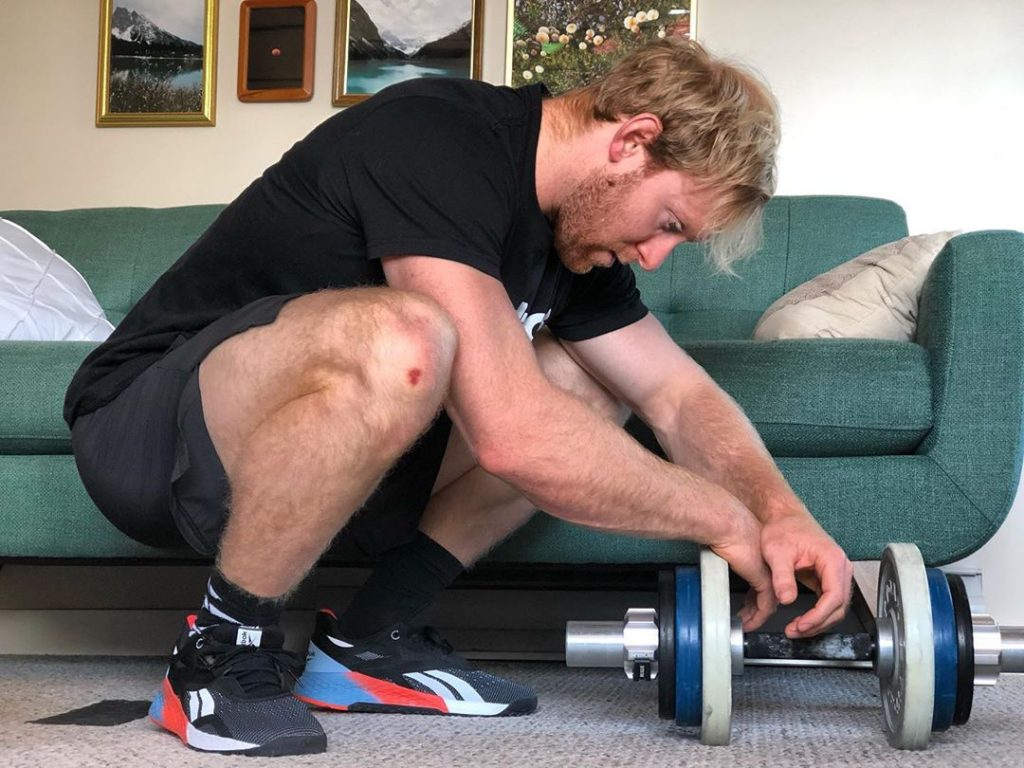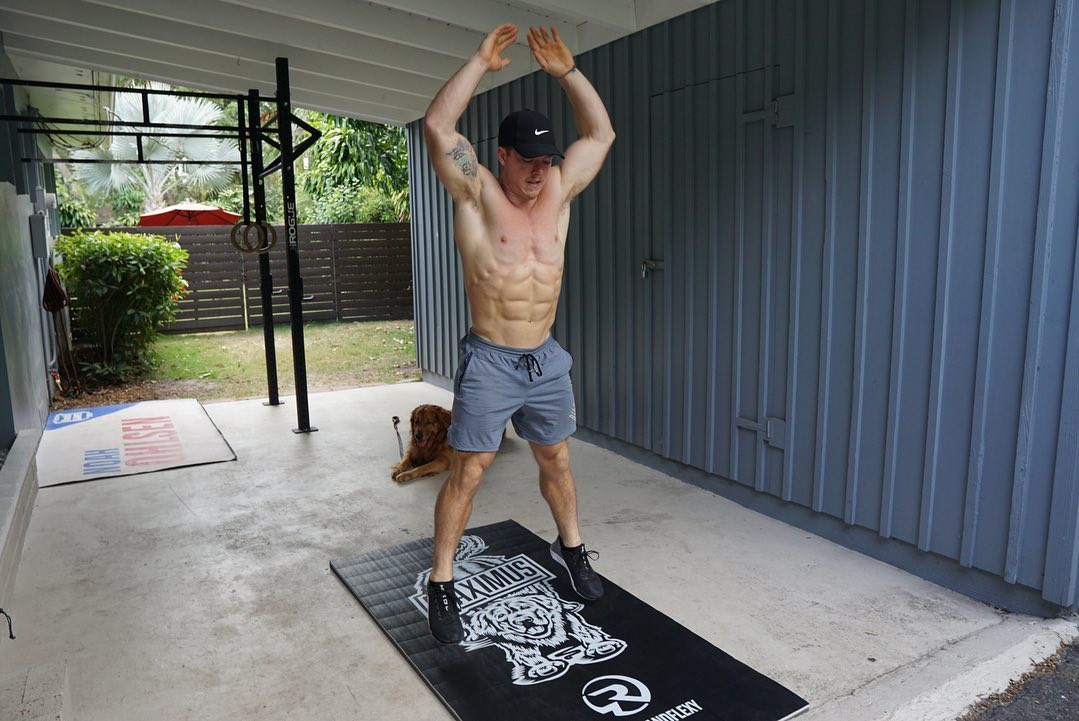How to maintain exercise adherence during the quarantine?
The quarantine seems to be lasting way longer than we anticipated and, among other things, it’s taken put our sport activities on hold. For many individuals, this may eventually lead to a decrease in exercise adherence. In this article, I’ll be talking about how we can keep our motivation high during the lockdown.
The way we do CrossFit has changed
The majority of individuals who participate in any form of physical activity, do so in an exterior setting: CrossFit boxes, gyms, pools, track, etc. It’s uncommon to come across someone who trains at home; but what was once the exception is now the rule.
The physical consequences of the lockdown are quite obvious in the sense that we lack access to the environmental conditions needed to apply sport-specific stimuli. From a psychological point of view, we’ve gone from training with other athletes and coaches to doing so by our lonesome; so there’s this whole social network that has also been interrupted.
Truth be told, society has adapted to the situation and developed adhoc solutions: HIIT training using bodyweight exercises, online classes on social media, videochat with coaches and support staff… but what if this doesn’t quite cut it?
During the lockdown period, some people have suddenly lost their mojo and just don’t feel like training. If this situation lasts long enough, it may gradually lead to losing their exercise adherence.
Why do we experience a decrease in exercise adherence?
One decides to dropout of sport due to many reasons but for the purpose of this article, I’ll be focusing on those that best apply to the current circumstances: sport dropout due to controllable reasons.
We can find ourselves in one of two situations: dropout due to dissatisfaction when personal needs are not met while participating in sport; and dropout due to lower personal investment (people who get into sport to «try it out» but still haven’t dedicated enough time and effort to feel fully committed).
Sarrazin et. al (2002), based on several commitment studies, developed a theoretical framework to help explain the dropout phenomenon (see figure 1). The model is based on sport commitment being a construct that impedes dropout behavior and how it could enhanced or debilitated by certain antecedents:

- Benefits derived from the sport: the more consequences the athlete identifies as beneficial for themselves (learning and perfecting skills, gaining muscle, outperforming others, making friends, etc.), the more they’ll enjoy the activity.
- Availability of attractive alternatives: the will to be involved in other activities non-related to current sport.
- Personal investment: this concept represents the personal resources (time, effort and money) we spend on an activity, which would be lost if we were to dropout. This model suggests there’s a direct relationship between involvement in sports and personal investment.
- Social coercion: expectations and pressure exerted by social convention or immediate support system (family members, close friends, …). If an individual perceives this pressure at a higher level, they’ll be more committed to their sport.
Can the lockdown lead to a dropout?
Literature suggests that anticipated benefits are a variable that best predicts sport dropouts and the most obvious consequence of the lockdown is that we don’t have access to most of these benefits. So, there’s reason to believe there could be a substantial decrease in exercise adherence.
Many athletes may be facing changes in their motivational processes due to various reasons:
- Repetitiveness of movements during training sessions due to limited equipment
- We’ve associated our sport with a certain context (you do CrossFit at a box, you run at the track, etc.) and training in a home setting is an environmental modification that may not be as appetitive.
- The progress we expected to see these months in terms of strength, gymnastics conditioning or cardiovascular endurance may not be up to par.
- Absence of socialization
Given these inconveniences, you may consider the personal costs higher than the anticipated benefits, and therefore decide to stop exercising. Now, giving our bodies rest during the quarantine could be very positive; however, if you ever struggled to introduce physical activity in your daily routine in the first place, this may bring you one step closer to sedentarism.
Can we fix it?

As we’ve seen, sport dropout is a multifaceted phenomenon, so there’s no universal solution for it. The key aspect relies on implementing personalized solutions based on one’s differences. And to do so, we must go back to the never-ending question: what’s your why?
If you manage to identify the benefits you expect from maintaining exercise adherence, you’ll be able to adapt to the current situation accordingly.
- If you enjoy competing against others, sign up for any of the trillions of online competitions organized internationally. Also, many boxes have come up with challenges for the lockdown like the Quarantine Classic organized by Training Think Tank or the CrossFit Games Fundraiser. Check out social media cause there’ll be more coming up!
- If you enjoy making friends and connecting with them through sport, participate in live classes organized at your box or start your own workout posse to throwdown together. FYI, Rich Froning is giving live classes on Mayhem’s YouTube channel, monday thru friday at 8:15 A.M. (central daylight time). Your welcome.
- If you enjoy learning and perfecting skills, take this time to work on postural control and maximizing strength-to-weight ratio with gymnastic movements: handstand, L-sits, planks, pushups, pistols, etc. Set some goals for the Quarantine and monitor your progress; hold yourself accountable!
- If your deepest desire is to compete at a higher level in the near future, talk with your coaches and support staff to adapt your program to current resources so you can continue to progress. You’ll most likely run into holes in your fitness you wouldn’t have identified had it not been for the lockdown.
We all get into sports for our own reasons and now that we’re in uncharted territory it’s time to remember them. You’ll find out soon enough that commitment isn’t about equipment or a certain place; it’s about the people and the experiences; luckily for us, we still have access to all that (even if it is through the glass).
- Carlin, M. (2015). El abandono de la práctica deportiva, motivación y estados de ánimo en deportistas. Wanceulen SL. - Rusbult, C. E. (1980). Commitment and satisfaction in romantic associations: A test of the investment model. Journal of Experimental Social Psychology, 16, 172-186. - Rusbult, C. E. (1983). A longitudinal test of the investment model: The development (and deterioration) of satisfaction and commitment in heterosexual involvements. Journal of Personality and Social Psychology, 45, 101-117. - Sarrazin, P., Vallerand, R., Guillet, E., Pelletier, L., & Cury, F. (2002). Motivation and dropout in female handballers: A 21‐month prospective study. European journal of social psychology, 32(3), 395-418.

